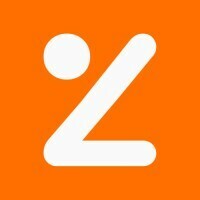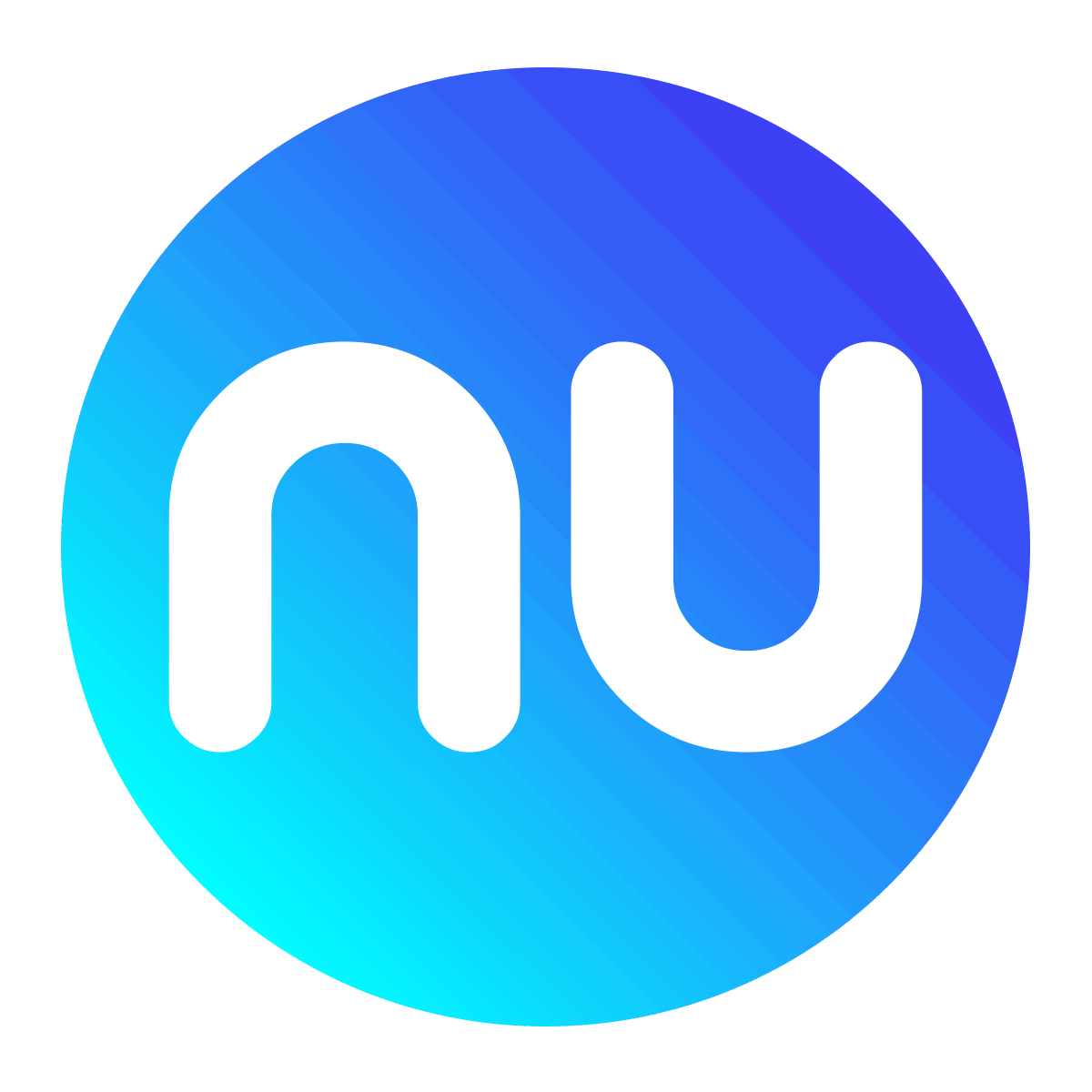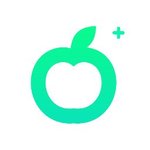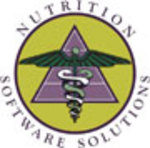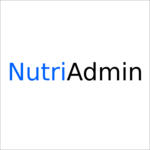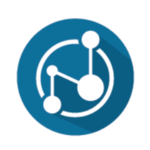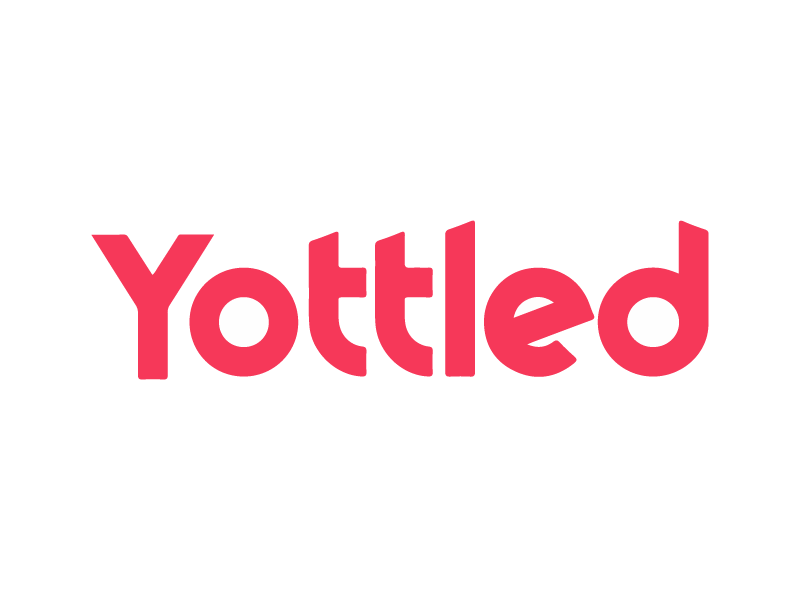What Is Nutritionist Software?
Nutritionist software is a digital application developed to help nutritionists, dietitians, and other healthcare professionals manage and monitor their patients' nutritional needs. This program has a number of features and functionalities designed to help streamline the nutrition counseling process and improve client outcomes. One of the key applications for nutritionist software is to track and analyze customers' nutritional consumption.
This can be accomplished through a variety of approaches, including food diary entries, meal planning, and recipe analysis. The software also enables the construction of personalized meal plans and nutrition goals depending on the client's specific requirements. In addition to tracking food consumption, nutritionist software can provide reports and graphics to help customers track their progress toward their goals.
This feature not only keeps clients engaged, but it also allows nutritionists to track their clients' progress and make any required changes to their nutrition recommendations. Another important feature of nutritionist software is the capacity to securely store and organize client information. This contains personal information, medical history, dietary limitations, and other pertinent data.
Having all of this information in one place saves time and allows the nutritionist to communicate more effectively with their clients. Furthermore, many nutritionist software packages provide instructional tools such as films, articles, and recipes to assist clients in better understanding their nutritional needs and making healthier choices. This feature is also a helpful resource for dietitians who want to deliver evidence-based advice to their customers while also staying current on nutrition trends.
When selecting nutritionist software, it is critical to consider how it interacts with other systems and devices. Some software may include connectors with fitness monitoring applications, electronic health records, and other technologies to provide a more complete approach to client care. Overall, nutritionist software is a beneficial tool for healthcare providers that want to improve their clients' nutritional outcomes.
Its capabilities, including food intake tracking and analysis, individualized meal planning, progress tracking, and safe client information storage, make it an indispensable tool in the nutrition counseling process. When choosing nutritionist software, it is important to consider the various possibilities available on the market, as well as their interoperability with other systems.
What Are The Recent Trends In Nutritionist Software?
The nutritionist software market has grown significantly in recent years as people become more conscious of the importance of appropriate nutrition in leading a healthy lifestyle. With the growing demand for nutrition-related services, software developers are constantly inventing and improving their products, resulting in the introduction of new market trends.
In this buyer's guide, we'll go over the latest developments in nutritionist software and what you should look for before making a purchase.
1. Cloud-Based Solutions: With the advancement of technology, old offline software systems are becoming obsolete. More and more dietitians are turning to cloud-based solutions that allow them to access client data from anywhere and at any time. These systems also provide data backup and security, making them a viable option for dietitians.
2. Artificial Intelligence (AI): AI-powered nutritionist software is gaining popularity due to its capacity to generate tailored meal plans based on an individual's dietary needs and preferences. This technology can also be used to analyze and track food intake, giving dietitians and their clients with reliable insights.
3. Mobile Applications: With the increased use of smartphones, nutritionist software vendors are now providing mobile applications to their clients and nutritionists. These apps make it easy to measure food intake, assess progress, and connect with clients, thereby improving the overall convenience and efficiency.
4. Wearable Device Integration: Nutritionist software developers have acknowledged the importance of wearable devices in fitness and health tracking. As a result, numerous software solutions now work with wearable devices to provide real-time data on physical activity, calorie consumption, and other metrics.
5. Data Analytics: The new generation of nutritionist software has extensive analytics features that enable dietitians to collect and analyze data from their clients. This tool not only aids in making real-time decisions, but it also provides useful information for long-term planning.
6. Virtual Consultations: With the ongoing epidemic and the rise of telehealth, virtual consultations are the new standard. Nutritionist software with video conferencing and virtual consultation features has grown more popular since it streamlines communication and allows nutritionists to communicate with customers remotely.
Benefits Of Using Nutritionist Software
In today's fast-paced environment, nutrition is critical for preserving overall health and well-being. As a result, many people are turning to nutritionists for tailored counsel and recommendations. However, coordinating client data, meal plans, and visits can be difficult and time-consuming for dietitians. This is where the nutritionist software comes in. These complete digital tools are intended to expedite and simplify a nutritionist's workflow, allowing them to focus on their customers' needs and provide them with high-quality treatment.
We'll look at the main benefits of adopting nutritionist software and how it may help your business.
1. Organized Client Management: One of the primary benefits of employing nutritionist software is the ability to efficiently manage client data. These software solutions enable you to save and retrieve client information such as health history, allergies, dietary preferences, and progress reports in a consolidated area. This not only saves time, but also ensures that the information is secure and readily available when needed.
2. Customized Meal Planning: Nutritionist software includes a variety of tools that enable dietitians to construct individualized, evidence-based meal plans for their clients. These plans can be customized to meet specific dietary needs, goals, and limits, ensuring that each client receives a unique and personalized approach to their nutrition journey.
3. Time-Saving Appointment Scheduling: In addition to maintaining client information, nutritionist software allows for simple and fast appointment scheduling. Nutritionists can save time and minimize scheduling conflicts by utilizing features like automatic reminders, online booking, and real-time availability.
4. Simplified Billing And Invoicing: Nutritionist software has billing and invoicing features, which eliminates the need for manual invoicing and record-keeping. This not only saves time, but also ensures accuracy in financial transactions, lowering the likelihood of errors or anomalies.
5. Improved Communication With Clients: Nutritionist software includes built-in communication features that allow nutritionists to stay in touch with their clients outside of visits. In-app messaging and video conferencing allow dietitians to provide immediate support and direction to their customers, making communication much more effective and easy.
6. Data Analysis And Reporting: Nutritionist software allows you to track and analyze client progress over time, enabling you to make data-driven decisions and make changes to their nutrition regimens. These software applications also have sophisticated reporting functions, which provide insights into your company's success and client outcomes.
Important Factors To Consider While Purchasing Nutritionist Software?
As a nutritionist, managing client information and developing tailored meal plans can be time-consuming and difficult. This is where nutritionist software comes in. This customized software is intended to simplify your workflow, boost efficiency, and improve customer communication. However, with so many options on the market, it might be difficult to find the appropriate one.
To make an informed decision, here are some crucial elements to consider while choosing nutritionist software:
1. Client Administration Capabilities: A decent nutritionist software should provide powerful client administration capabilities like data storage, progress tracking, and report generation. Look for software that enables you to create personalized profiles for each customer, set goals, track food intake, and track success. This will save you time while also providing vital insights into your clients' health journey.
2. Meal Planning And Tracking Features: Nutritionist software should offer strong meal planning features, such as a large food database, the capacity to build personalized meal plans, and the ability to track clients' food intake. Look for software that allows you to plan meals with a drag-and-drop interface, create grocery lists, and track your customers' progress.
3. Integrations And Data Import/Export: When selecting nutritionist program, be sure it is cross-platform compatible and can interface effortlessly with other products you use on a regular basis. It should also allow you to import and export data in a variety of formats, making it easier to exchange information with customers and colleagues.
4. Accessibility And User-Friendly Interface: For optimal performance, the software should have a user-friendly interface and be accessible from a variety of devices. This allows you to manage your clients' information and make meal plans while on the road, enhancing productivity and flexibility.
5. Security And Privacy: As a nutritionist, you work with sensitive client information, so be sure the software you use has strict security measures in place to protect your clients' privacy. Look for software that has data encryption, backup and recovery features, and customizable privacy settings.
6. Customer Support: Before making a purchase, you should research the software company's customer support. Look for software companies that give multi-channel assistance, such as phone, email, and live chat, as well as training materials and updates.
7. Price And Value For Money: Nutritionist software is available in a variety of price ranges, from free to high-end subscription models. Consider your budget as well as the software's features and benefits to get the best value for your money. By taking these elements into account, you can guarantee that the nutritionist software you choose meets your requirements and has features that will make your job easier. Remember to read reviews and request demos before making a purchase to fully understand the software's capabilities. With the correct nutritionist software, you can improve your practice and deliver the finest service to your clients.
What Are The Key Features To Look For In Nutritionist Software?
When looking for Nutritionist Software, it is critical to evaluate the major elements that will best meet your requirements and improve your practice.
Here are the major factors to consider while comparing different options:
1. Tools For Meal Planning And Tracking: A nutritionist must be able to design personalized meal plans as well as track the success of their clients. Make sure the program has an easy-to-use interface and can be customized based on dietary restrictions and preferences.
2. Nutrient Analysis And Labeling: A decent nutritionist program should include a large nutrient database for calculating and analyzing the nutritional worth of foods and meals. This function is particularly useful if you work with customers who have specific dietary requirements or aspirations.
3. Client management And Communication: Look for software that lets you quickly maintain your client's information, such as their medical history, meal choices, and progress. It should also include communication features like messaging and appointment booking to help you communicate more effectively with clients.
4. Wearable Device Integrations: Being able to sync with popular wearable devices such as fitness trackers and smart scales will give you and your clients with vital data. This tool might also help you save time by automatically uploading and tracking your clients' information.
5. Recipe Database: Having a thorough recipe database with a variety of healthy meals can help you save time and prepare meals more efficiently. Look for software that provides a diverse set of recipes, including vegetarian, vegan, and special dietary options.
6. Client Portal: A client portal allows your clients to receive tailored meal plans, track their progress, and communicate with you directly. This feature improves the client's experience and engagement with your services.
7. Custom Branding And Reporting: Some nutritionist software allows you to customize your branding and reports, giving your services a more professional and personalized feel.
8. Data Security And Privacy: As a healthcare provider, you must guarantee that the software you employ adheres to HIPAA laws and protects the security and privacy of your clients' data. By taking these crucial elements into account, you may choose nutritionist software that not only streamlines your business but also improves the whole client experience.
Why Do Businesses Need Nutritionist Software?
Nutritionist software is a digital tool created exclusively for enterprises in the health and wellness sector. It provides a variety of features and functionalities to assist nutritionists, dietitians, and other health professionals in properly managing their customers' nutritional and wellness needs.
Here are some convincing reasons why organizations want dietician software.
1. Improves Client Management: Nutritionist software enables businesses to maintain their clients' information, such as personal details, health history, nutritional choices, and progress, in one easy area. This eliminates the need for human record-keeping, saving time while maintaining accuracy.
2. Customized Meal Planning: Many nutritionist software systems provide advanced meal planning features, allowing businesses to build personalised meal plans for their clients based on their dietary requirements and goals. This functionality not only improves the client experience, but also ensures efficient and effective nutrition management.
3. Tracking And Monitoring: Nutritionist software provides a variety of tracking and monitoring functions, including calorie and nutrient intake tracking, weight and body measurement tracking, and exercise tracking. These technologies not only assist clients stay on track, but they also enable businesses to track their clients' progress and make required changes to their plans.
4. Client Communication: Nutritionist software enables businesses to effortlessly connect with their customers, provide meal plans, and offer help and direction. This improves the customer experience and results in a more tailored and engaging approach to nutrition management.
5. Time And Cost Savings: Nutritionist software automates several operations, including appointment scheduling, client communication, and record-keeping, allowing firms to save time and cut administrative costs. This helps firms to focus more on providing high-quality services to their customers.
6. Data Analysis And Reporting: Nutritionist software frequently includes comprehensive data analysis and reporting features, giving businesses important insights into their clients' progress, trends, and areas for development. These insights enable organizations to make more informed decisions and increase the effectiveness of their offerings.
How Much Time Is Required To Implement Nutritionist Software?
The time required to implement dietician software varies depending on numerous factors. These include the size of your practice, the complexity of the software, and the level of customization needed. Implementing dietician software often takes between a few days and a few weeks. The first step in deploying nutritionist software is to create an account and enter your practice's information, such as client details and appointment schedules.
This process normally takes between a few hours and a day, depending on how much information you need to enter. Next, familiarize yourself with the software's features and functionalities. This could include attending training classes or watching lesson videos offered by the software company. This learning time can last several days, depending on your availability and how fast you grasp the software's functionality. Once you're comfortable with the software, you may use it for daily duties like appointment scheduling, client information management, and meal planning.
The time required to completely integrate the program into your practice regimen will vary depending on your learning speed and work schedule. If you need modification or integration with other systems, like as billing or EMR software, it may take longer to set up these capabilities. This can take anything from a few days to a week, depending on the level of customization required. Overall, implementing nutritionist software can take anywhere from a few days to a few weeks, but it is critical to set aside enough time to effectively learn and incorporate the program into your practice.
What Is The Level Of Customization Available In Nutritionist Software?
When looking for nutritionist software, it's crucial to examine the level of customisation available. This refers to the software's capacity to be customized to your individual requirements and preferences. In today's ever-changing world of nutrition, it is critical to have software that can adapt to your shifting workflow and clientele. The level of customization accessible in nutritionist software varies depending on which package you select.
However, most credible services provide a significant level of flexibility and personalization. This allows you to tailor the many features and settings to your specific approach to nutrition advice. Meal planning, tracking and analysis tools, client communication, and data storage are all examples of areas where customization may be possible. With these features, you should be able to customize the software to meet your specific dietary restrictions and recommendations, as well as your chosen methods of tracking progress and interacting with clients.
Additionally, customisation in nutritionist software can include the user interface and design. This might include possibilities to adjust color palettes, add individual branding elements, and tailor layouts to your workflow. Finally, the level of customization available in nutritionist software can have a significant impact on how efficiently and successfully you can operate your business. Before making a purchase, it is critical to conduct thorough research and analyze the customization choices provided by various software packages.
Which Industries Can Benefit The Most From Nutritionist Software?
Nutritionist software is an invaluable resource for professionals in a variety of industries, offering comprehensive solutions for managing and analyzing nutritional data. While nutritionist software may appear to be a niche product, its applications and benefits go far beyond health and wellness.
We'll look at which sectors stand to profit the most from nutritionist software and how it may help them run more efficiently.
1. Healthcare Business: Nutritionist software benefits the healthcare business significantly. This program allows healthcare professionals such as registered dietitians, doctors, and nurses to track patients' food intake, generate tailored meal plans, and monitor their progress. Nutritionist software, which can securely store patient data and generate reports, streamlines the nutritional assessment process and allows for efficient and accurate care for patients suffering from chronic diseases such as diabetes, obesity, and heart disease.
2. Fitness And Wellness Business: As the fitness and wellness business grows, more people are turning to nutritionists to develop personalized meal plans and attain their health goals. Nutritionist software gives experts in this area an easy way to design meal plans that are suited to each client's specific needs and tastes. It can also follow their development, perform nutritional analyses, and monitor calorie consumption, making it an indispensable tool for nutritionists, personal trainers, and wellness coaches.
3. Food Service Business: Nutritionist software is a game changer in the foodservice business. This software can assist restaurants and catering enterprises comply with regulatory laws and deliver accurate nutritional information on their menus. It also enables them to design customized menus for consumers with specific dietary needs or allergies, ensuring that they serve safe and nutritious meals.
4. Education Industry: Nutritionist software is a valuable resource for educational institutions that train dieticians and nutritionists for the workforce. Students can use the software to create meal plans, track their intake, and learn about nutrition analysis. This hands-on experience prepares them for real-world applications and provides them with the skills needed to thrive in their future employment.
5. Corporate Wellness Programs: Many organizations are now including corporate wellness programs as part of their employee benefits. Nutritionist software can help these programs by providing staff with precise dietary analyses, personalized meal plans, and fitness tracking. This promotes healthy eating habits, reduces healthcare expenditures, and improves employee productivity and morale.
Conclusion
Finally, choosing the best nutritionist software for your office will help you give more effective and efficient services to your consumers. As you explore several possibilities, keep in mind your personal objectives and requirements, as well as the distinct features and functionalities provided by each software. By carefully examining essential variables such as client management, appointment scheduling, meal planning, and team collaboration, you can determine which software best fits your goals and practices.
It is also critical to ensure that the software is user-friendly, follows industry laws, and provides excellent customer service. Investing in nutritionist software can provide numerous benefits to your clinic, including increased productivity, better client outcomes, and more efficient operations. With the correct software, you can successfully manage your clients' nutritional needs, measure their progress, and work with your staff to achieve the best outcomes. We hope you found this buyer's guide useful in making an informed selection. By carefully assessing your alternatives and taking into account all relevant factors, you can choose the ideal nutritionist software to help you take your practice to the next level.



